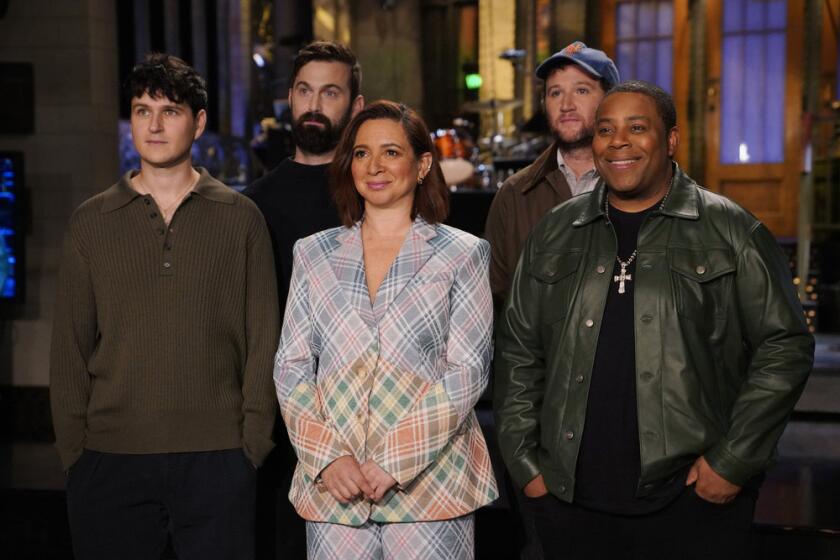Newsletter: Essential Arts: Pandemic curtain begins to rise on the performing arts
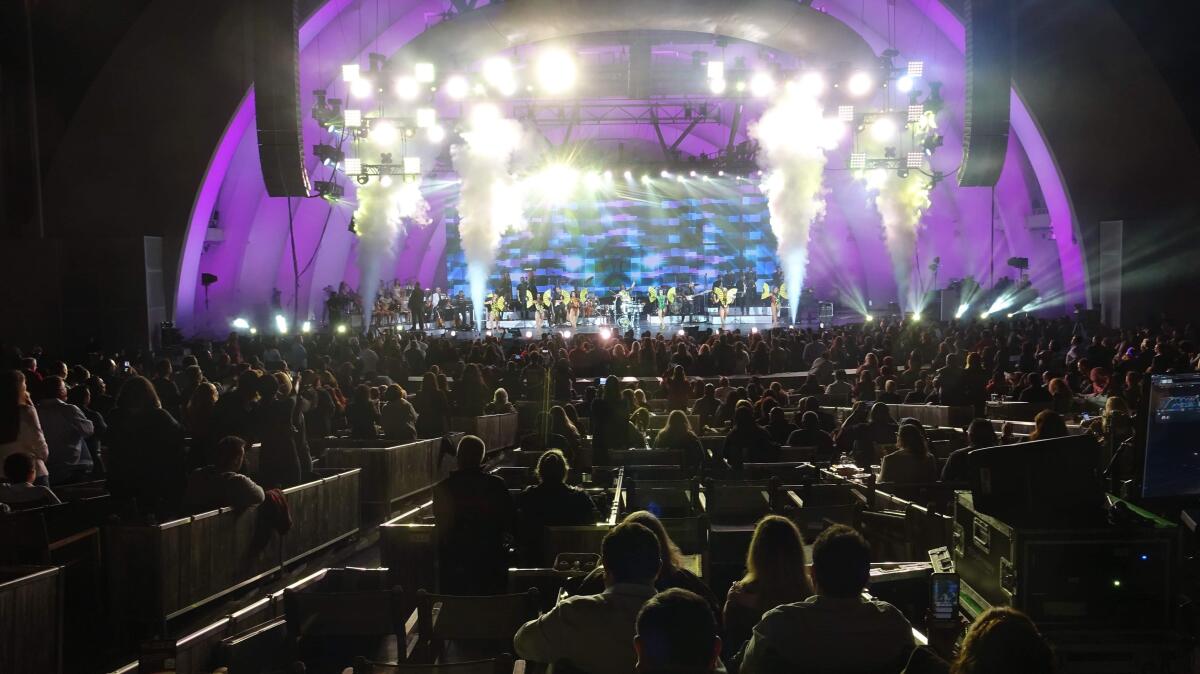
Choose an album — or two — and play on repeat for the course of the pandemic as you contemplate the nature of time and space. That’s been one of my formulas for making it through the past year. My albums? Thao & the Get Down Stay Down’s “Temple” and “A Man Alive.” I’m Carolina A. Miranda, arts and urban design columnist at the Los Angeles Times, and I’m here with all the essential culture news about openings — as well as incredibly important paintings of beaver privates.
Open sesame
Last spring, as the reality began to dawn on all of us that the pandemic wasn’t going to be letting up any time soon, Times classical music critic Mark Swed interviewed Deborah Borda, former president and CEO of the L.A. Phil (who now oversees that other little philharmonic in New York), and asked for a few survival lessons. As part of their conversation, she said, “I say to the orchestra, just imagine the day when we all come together again, the first moment you’re onstage and the staff and everyone is there and you start to play, and then we have a concert. That will be magic.”
Those words have stuck with me since I first read them. That moment of magic — knock on all the wood — may soon be upon us.
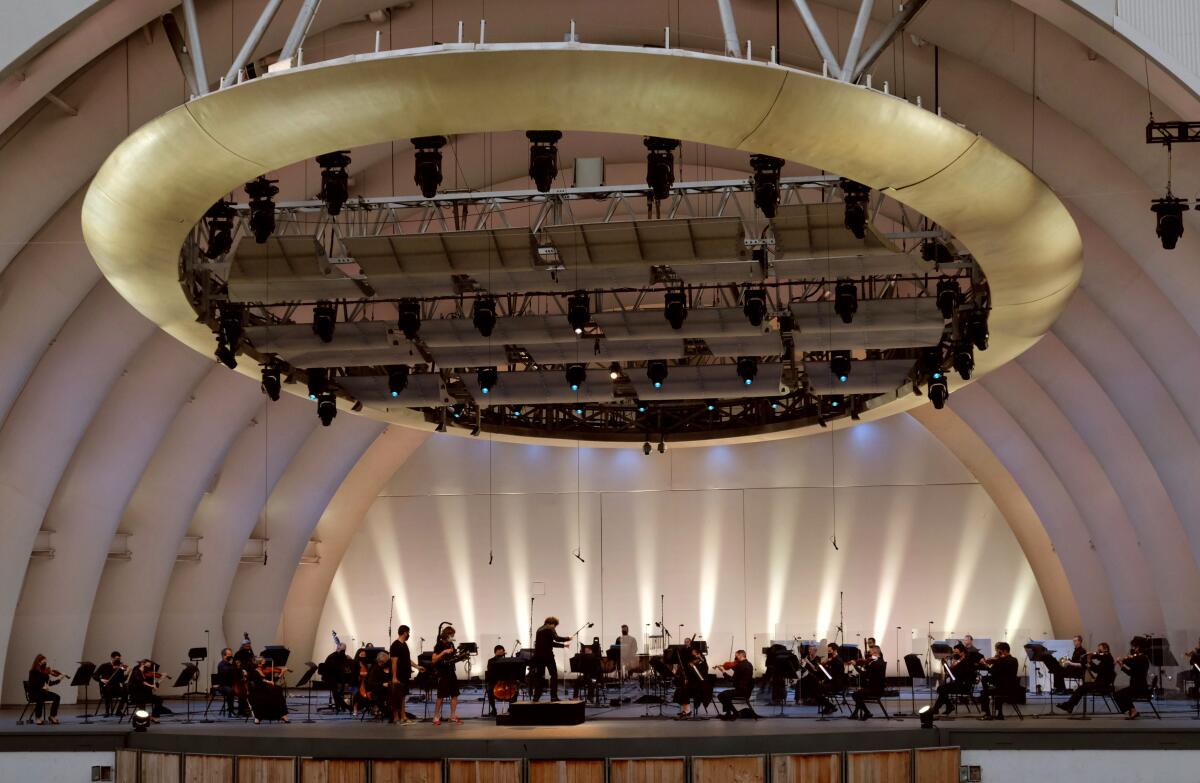
The Times’ Jessica Gelt reports that the Hollywood Bowl will be back in business next month, kicking things off with a May 15 concert for frontline workers. The 2021 summer season will then officially kick off in early July, following the state’s plan to reopen businesses and venues by June 15. “This is the moment we’ve been waiting for,” says Chad Smith, the L.A. Phil’s president and chief executive. “The Bowl is back.”
If you haven’t already, it’s time to crank Tchaikovsky’s 1812 Overture. Right. Now.
Make the most of L.A.
Get our guide to events and happenings in the SoCal arts scene. In your inbox once a week.
You may occasionally receive promotional content from the Los Angeles Times.
Gelt also reports that the Music Center has announced its first in-person events: Dance at Dusk, a series that will feature dance presentations in the outdoor Jerry Moss Plaza. This will include a tap performance by choreographers Dormeshia, Jason Samuels Smith and Derick K. Grant (kicking off May 26), followed by an American Ballet Theatre presentation in June, then a West Coast premiere by the Paul Taylor Dance Company and a show by Alonzo King LINES Ballet with Tiler Peck and Roman Mejia.
L.A. Opera is also staging a comeback this summer, beginning with an outdoor performance of Igor Stravinsky’s “Oedipus Rex.” And to support the organization’s return, philanthropists Terri and Jerry Kohl have donated $5 million to the company. The gift, president and chief executive Christopher Koelsch tells Gelt, “has an immediate effect on confidence to rebuild our audiences and artists in the wake of such an extensive closure.”
Gelt, who is definitely covering every angle of this story (mad props, Jessica!), also reports that the possibility of a full reopening in June (if certain thresholds for vaccination and hospitalizations are met) is inducing whiplash among performing arts organizations trying to figure out what exactly they need to be preparing for. As Pasadena Playhouse Artistic Director Danny Feldman jokes: “What a day, what a week. I can’t keep up.”
But it’s not all openings out there right now: Deborah Vankin reports that Frieze Los Angeles has canceled its in-person fair, which had originally been scheduled for July, citing the uncertainty. Instead, organizers will hold an online version of the fair this summer. And next year, they’ll be departing their habitual location on the Paramount backlot in favor of a new site adjacent to the Beverly Hilton.
Vankin also reports that the Los Angeles County Board of Supervisors voted this week to designate April as “Arts Month” and has announced that it will commit to investing in culture programming from nonprofits geared at social service and social justice.
Plays and players
The fallout continues after the most recent edition of the L.A. Stage Alliance’s Ovation Awards, in which the name of Asian American nominee Jully Lee was mispronounced and a photo of a different Asian woman was shown on screen. In the wake of that — and as further issues related to diversity and the administration of the group came to light — at least 50 L.A. theaters withdrew from the organization. Now the Alliance has announced that it will cease operations. Snehal Desai, artistic director at East West Players, tells Jessica Gelt that shutting down rather than dealing with difficult systemic issues is “a disappointment.”
Times culture reporter Ashley Lee writes about the casual racism these incidents surface (including some truly awful emails to The Times). “I find it exponentially more disrespectful,” she writes, “that this error was made during an event that celebrates the theater, an industry in which artists of color are already pressured to water down their stories, language and entire selves to be palatable for white artistic directors, collaborators and audiences.”

Some great related reading: Artist and performer Kyoko Takenaka has recorded the myriad racist and insensitive things men have said in bars and employed the recordings in a new film, “Home,” a four-chapter sonic and cinematic compilation that was released last month. “I felt compelled to share it during this really triggering time for so many Asian American femmes,” Takenaka tells The Times’ Christi Carras. “This is nothing new for Asian Americans. This is something that we’ve dealt with since the beginning of our migration, since the 1800s.”
Plus, L.A.’s Iama Theatre is streaming two one-woman shows that dig into the psychological states of the pandemic and the nuances of Latina identity. “The Oxy Complex,” written and performed by Anna LaMadrid, tells the story of a woman struggling with the loneliness of the pandemic, while Sheila Carrasco’s “Anyone But Me” consists of short vignettes that explore the world through the eyes of different women, such as a grocery store clerk and a teen reckoning with abuse. Contributing reviewer Nikki Munoz writes that “we’re left to imagine how [these performers] might have shined even more brightly in front of a live audience.”
Dance space
The Times’ Daniel Hernandez recently attended a non-institutional reopening of sorts: the salsa and bachata dance jams that have sprung up organically in Venice Beach as coronavirus infection rates began to decline. In fact, he didn’t just attend — he hit the dance floor. “We dance. My mask comes off my nose. I pray for forgiveness from the pandemic watchdogs,” he writes. “I’m carrying a rhythm with another human, our bodies close. I can’t remember the last time I did this.”
Enjoying this newsletter? Consider subscribing to the Los Angeles Times
Your support helps us deliver the news that matters most. Become a subscriber.
Dance has carried me through the pandemic but in different ways. I’ve been intrigued by dancers who have taken to streets, fields, plazas, parking lots and TikTok as a way of continuing to showcase their craft. There’s something about wordless movement that feels like a balm at a time in which we have been trapped at home, tethered to our endless doom scrolls.
A couple of weeks ago, I tuned into the premiere of a new dance film by choreographer Suchi Branfman and cinematographer Tom Tsai that showcased dances that were drawn from choreographies written by inmates at the men’s prison in Norco. “Undanced Dances Through Prison Walls During a Pandemic” was produced by the 18th Street Arts Center and, thankfully, there will be another screening and conversation held on April 16.
Likewise, The Wallis, in collaboration with the Soraya and the Harris Theater, has been running a great program of free, short dance films called Films.Dance that is online through May 3. The series is produced by Jacob Jonas The Company and Somewhere Magazine, and it’s perfect programming for those who, like me, prefer to observe dance from a distance.
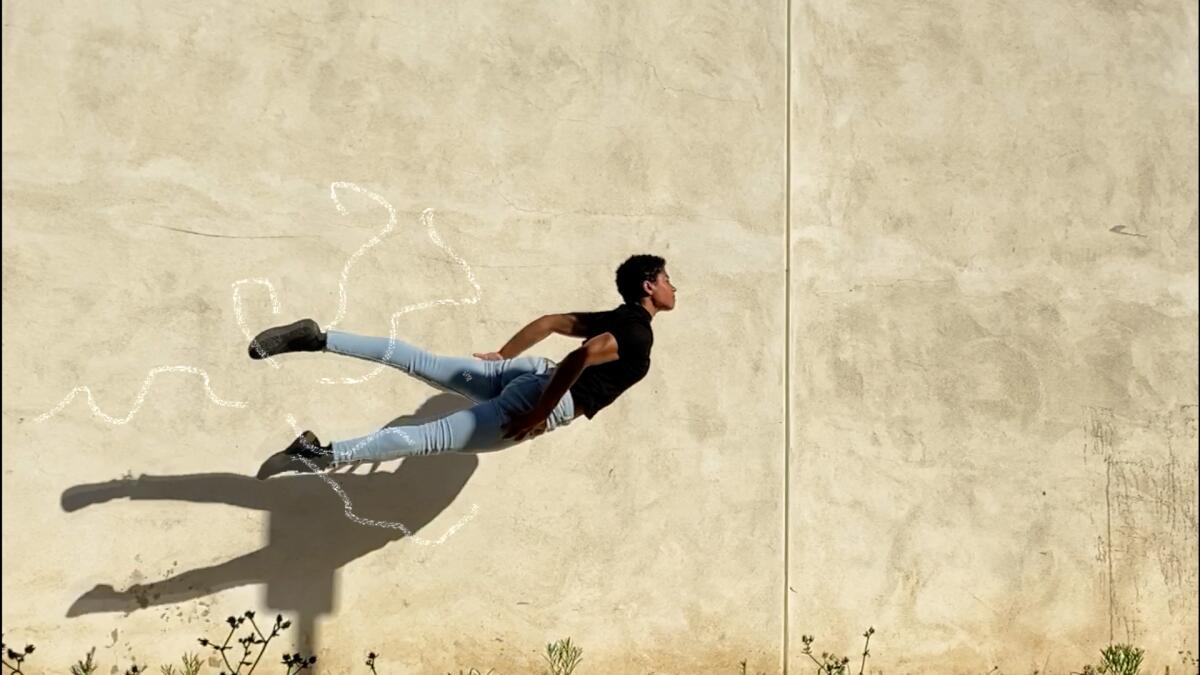
Art and equity
Times columnist Gustavo Arellano has a poignant piece about how at this moment of rising anti-Asian hate, works of art created by Japanese American detainees at World War II internment camps have found a thriving market online — at times without the knowledge of the artists’ families or descendants. “To see these objects for sale, which have been saved from a time of great suffering and loss, is a gut punch,” Nancy Ukai, project director of 50 Objects, a digital project about artifacts of this nature, tells Arellano. “They’re like puzzle pieces which have been thrown all over, and here we are trying to pick them up and make sense of our history.”
The Getty Conservation Institute and the city of Los Angeles have launched an initiative to identify and preserve L.A. landmarks connected with Black heritage, reports Makeda Easter. The African American Historic Places Project, as the three-year initiative is titled, aims to address disparities in landmark designations. Only 3% of landmarks are currently linked to Black heritage sites and only 6% of the city’s 1,200 historic-cultural monuments are associated with communities of color. If historic sites don’t accurately reflect the past, “then you’re getting an impoverished or a misreading of history,” says the Getty’s Susan Macdonald.
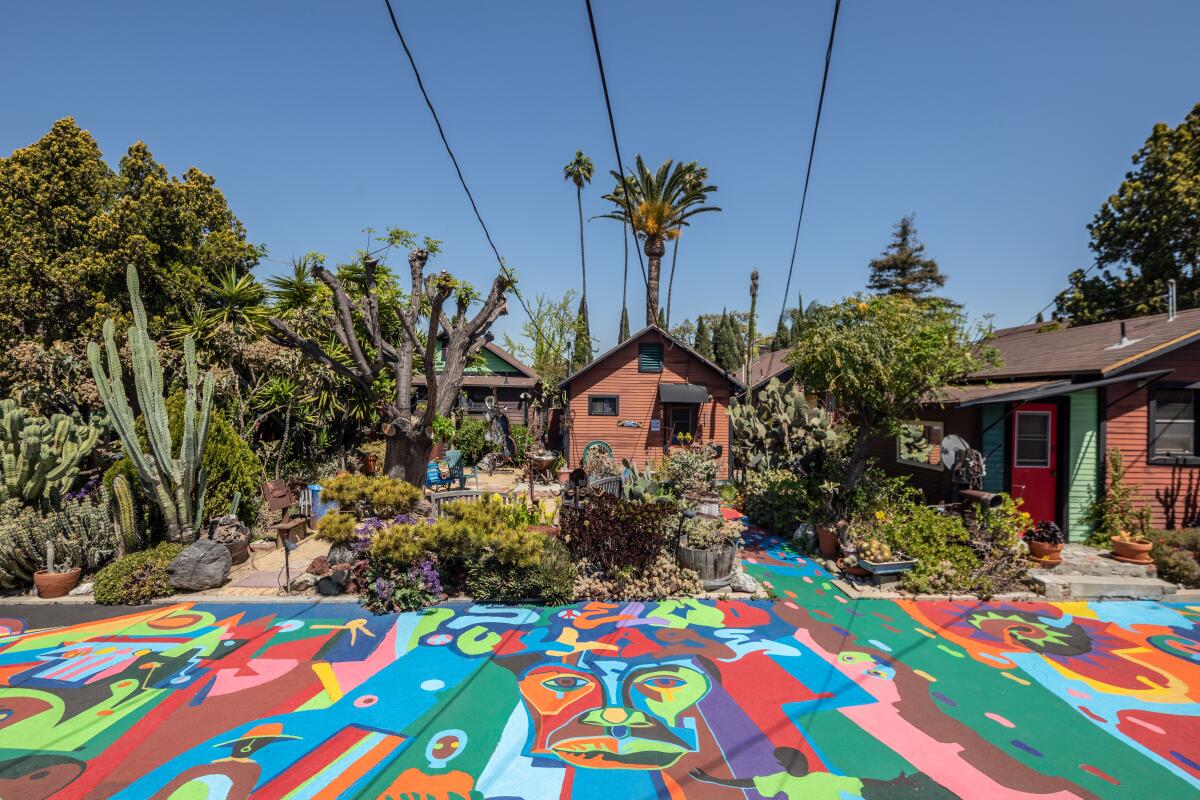
Essential happenings
L.A.’s One Archives Foundation, the oldest active LGBTQ organization in the U.S., has organized a virtual reading of Larry Kramer’s “The Normal Heart” for May 8 featuring a mostly BIPOC cast that includes actors Sterling K. Brown, Laverne Cox, Jeremy Pope and Guillermo Díaz. The Times’ Deborah Vankin has all the deets.
Contributor Rosemary McClure reports on this year’s Modernism Week in Palm Springs, which includes more than a dozen home and garden tours, as well as various special events. But if you prefer to keep your social distance, she has something better: a DIY architectural tour.
As always, Matt Cooper has got the list of what do — with 22 culture picks for the weekend. This includes supersized digital art installations by artists such as Refik Anadol and Nancy Baker Cahill in downtown L.A. as well as a drive-in performance of “Don Pasquale” performed by Opera Santa Barbara and directed by Pacific Opera Project’s Josh Shaw at the Ventura County Fairgrounds.
Last weekend, I caught L.A. artist rafa esparza’s latest show at Commonwealth and Council in Koreatown. esparza is an artist I’ve written about in the past. (His show at MASS MoCA in 2019, which touched on themes related to the U.S.-Mexico border, remains indelible in my mind.) His solo show at Commonwealth, titled ‘keeping,’ feels like a bit of a homecoming. The artist continues his experimentation with adobe as both sculptural material and surface — and in this case he uses it to record a Los Angeles that is Black and Brown. Represented are Black Lives Matter co-founder Patrisse Cullors, poet Yosimar Reyes and a taquero in a familiar hunch as he leans forward to take an order — a poignant collective portrait of L.A., its materials and its bodies.

‘keeping’ is on view through Saturday and appointments are booked. (Sorry!) But it’s always worth it to call the gallery to see if there have been cancellations.
Passages
Arthur Kopit, a Tony-nominated playwright and two-time Pulitzer finalist, known for fusing genres and an air of dark humor in works such as “Indians,” “Wings” and Nine,” is dead at 83.
Paul Ritter, a British actor of stage and screen who appeared most recently in the TV series “Chernobyl” and received a Tony nomination for his performance in the “The Norman Conquests” on Broadway, has died at 54.
Larry Baza, a San Diego arts patron who supported a range of causes related to art and activism, including the foundation of the mural-laced Chicano Park in Barrio Logan, is dead at 76.
Vicente Rojo, a painter, sculptor, graphic designers and publisher, who sat at a crossroads of Mexican artistic and intellectual life, has died at 89.
Joye Hummel, the first woman hired to write the Wonder Woman comic book series, work that went largely uncredited because she did it as a ghostwriter, has died at 97.
As part of its Overlooked series, the New York Times publishes a belated obituary for Aminah Brenda Lynn Robinson, an Ohio artist dedicated to recording Black life in her work, who died in 2015 at the age of 75.
In other news
— Story of the week: A group calling itself White Lies Matter has stolen a Confederate monument known as the Jefferson Davis Memorial Chair from an Alabama cemetery and has demanded that the United Daughters of the Confederacy hang a banner bearing a quote by Assata Shakur or they will turn the monument into a toilet.
— This is a good report about a series of murals by Johnny D. Gonzalez that chronicle Chicano history and turned a budget store on East First Street into a cultural landmark.
— Roger Ebert, architecture critic. On the anniversary of the film critic’s death, Archinect surfaces architecture critic Lee Bey’s great tribute to Ebert.
— People first, cars second: How Barcelona is greening city streets.
— I really enjoyed this Q&A with actor Paul Raci, an Oscar nominee for “Sound of Metal.” The conversation touches on how critical his work at Deaf West Theatre has been to his acting career. A good follow to Christi Carras’ story on the deaf actors in the film.
And last but not least ...
If, like me, you are lucky, you have an artist friend like Jeff Weiss who emails you essays about the significance of beaver testicles in the art of medieval Europe.
The biggest entertainment stories
Get our big stories about Hollywood, film, television, music, arts, culture and more right in your inbox as soon as they publish.
You may occasionally receive promotional content from the Los Angeles Times.




